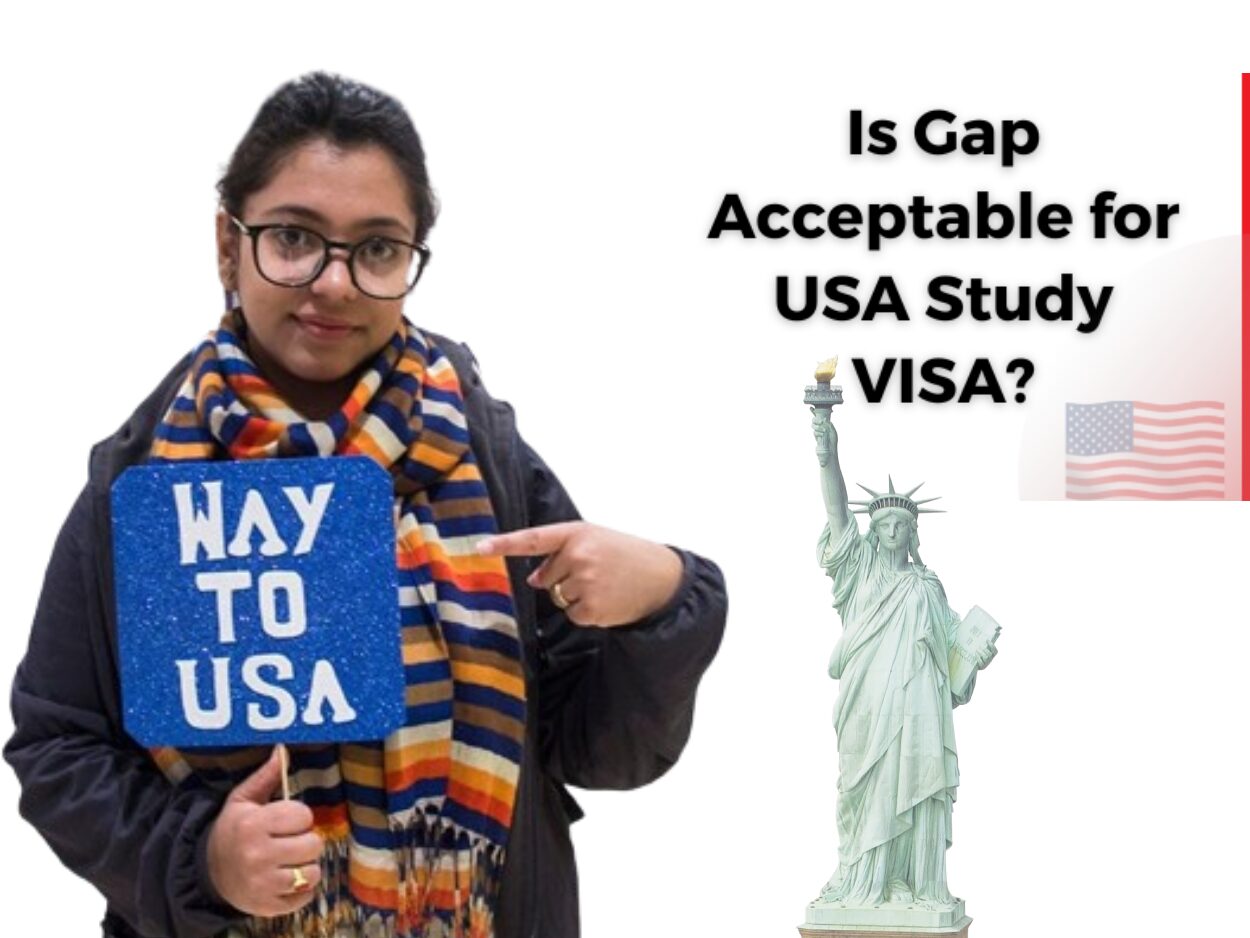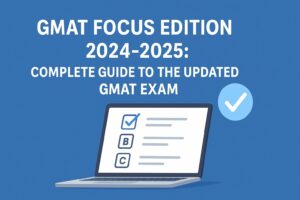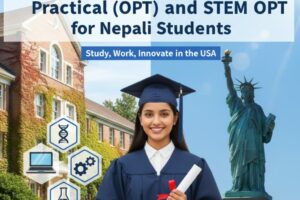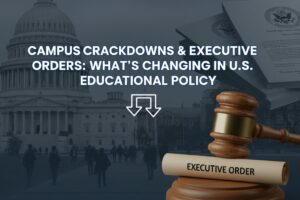How Much of a Study Gap is Acceptable in the USA?

Taking a gap year can be like a double-edged sword for students, it can be good or bad depending on how you make use of it. It’s a break that students take usually after the completion of a school period of over 12 years.
During this time, you get to explore the world in new ways and learn things you wouldn’t in a regular classroom. Many people choose to travel during their gap year, but others might need to pause their college plans to take care of family members or for health reasons.
The key is to approach this time off with a plan, no matter what the reason is. Doing so can improve your chances of getting into college.
Also read: Study in USA vs. Study in Canada
Generally, for undergraduate studies, it’s best not to exceed a gap year if you’re aiming for top universities. However, for graduate studies, having multiple gap years is acceptable as long as you’re involved in professional activities during that time.
However, the study gap requirements can easily vary with different universities and programs.
How much gap is acceptable in the US?
In the United States, most educational institutions typically accept a one-year study gap without requiring students to provide extensive justification.

This means that students who take a year off between completing their high school education and starting college can usually do so without encountering significant obstacles in the admissions process. However, if a student’s gap extends beyond one year, they may be required to provide additional explanation and evidence to the admissions committee.
It’s important to note that the acceptability of gap years can vary depending on the policies and preferences of individual universities. Some institutions may have specific guidelines regarding gap years, while others may go through each applicant’s circumstances on a case-by-case basis.
Also write: How to Write SOP For the USA | SOP Sample for US Study Visa
Therefore, students with gap years should research the policies of the universities they plan to apply to and be prepared to provide clear and compelling explanations for any extended gaps in their educational timeline.
Does a gap year affect college admission for undergraduate and graduate students in USA?
Experts recommend that students should apply for college while they’re still in high school because it’s easier with the support of counselors and teachers.
If you’re thinking about taking a gap year, it’s a good idea to check with the college admissions office about their policies on gap years to avoid any problems. Some students take a gap year because they didn’t get into their preferred school but still want to go there.
Also read: USA Study Guide for Nepalese Students
So, during the gap year, they work on improving themselves to stand out when they reapply.
Colleges expect students who took a gap year to show more maturity and direction and explain how they spent their time to enhance their academic goals.
Not all gap years are the same, so it’s important to show what you did during that time to make yourself a stronger applicant. Ultimately, if you use your time and experiences wisely, a gap year won’t hurt your chances of getting into college for undergraduate or graduate programs.
What are the ways to cover the gap for a US study Visa?
When explaining a study gap during interview, it’s essential to make a reference to your real situations; for example, medical reasons, or tour/travel or training, volunteer works, etc. The bottom line is how convincing you sound during interview.
Dreaming of Studying in the USA? Take the First Step with a FREE Consultation!
How do specific universities view gap years longer than one year for undergraduate programs?
The perception of gap years longer than one year varies among universities and is assessed on an individual basis. Many institutions value productive use of time, whether through work, volunteering, or other educational pursuits. It’s important for students to articulate how the gap year contributed to their personal and academic growth.
Direct consultation with admissions representatives from specific universities will provide the most accurate understanding of their policies regarding extended gap years.
Also read: Study in the USA From Nepal: List of Requirements
What types of professional activities during a gap year are most valued by admissions committees for graduate programs?
Admissions committees for graduate programs highly value professional activities that demonstrate skill development, leadership, and relevance to the chosen field of study. These can include internships, research projects, relevant employment, volunteer work in the field, and any initiative that shows a commitment to personal and professional growth.
Engaging in activities that contribute to the academic or professional community, such as publishing papers, attending workshops, or participating in relevant courses, also adds significant value to an application.
Are there any differences in the acceptance of gap years between public and private universities in the USA?
There’s no uniform policy across all public and private universities regarding the acceptance of gap years. Each institution has its own criteria for evaluating applicants with gap years, focusing on how the time was spent.
Public universities might have different considerations due to state guidelines, while private universities may offer more flexibility. It’s essential to research the specific policies of each university you’re interested in.
Also read: Top Universities in the USA for International Students
How can international students best document their gap year activities to strengthen their application?
To best document gap year activities, international students should maintain a detailed portfolio or log of their experiences, including descriptions, dates, and any recognitions or achievements. Including letters of recommendation from supervisors or mentors related to these activities can add credibility.
Furthermore, students should be prepared to articulate in essays and interviews how their gap year activities have prepared them for their future studies and how these experiences align with their academic and career goals.



